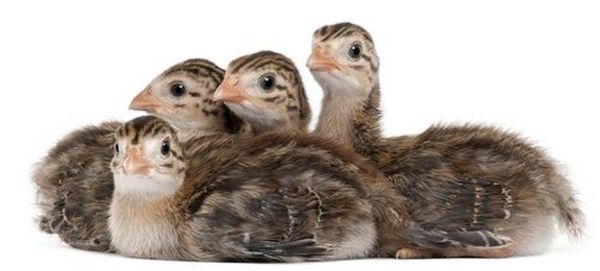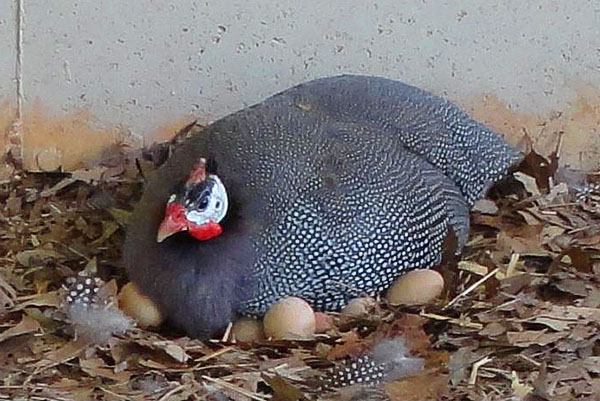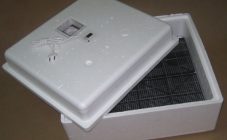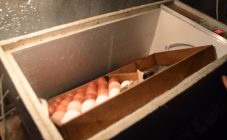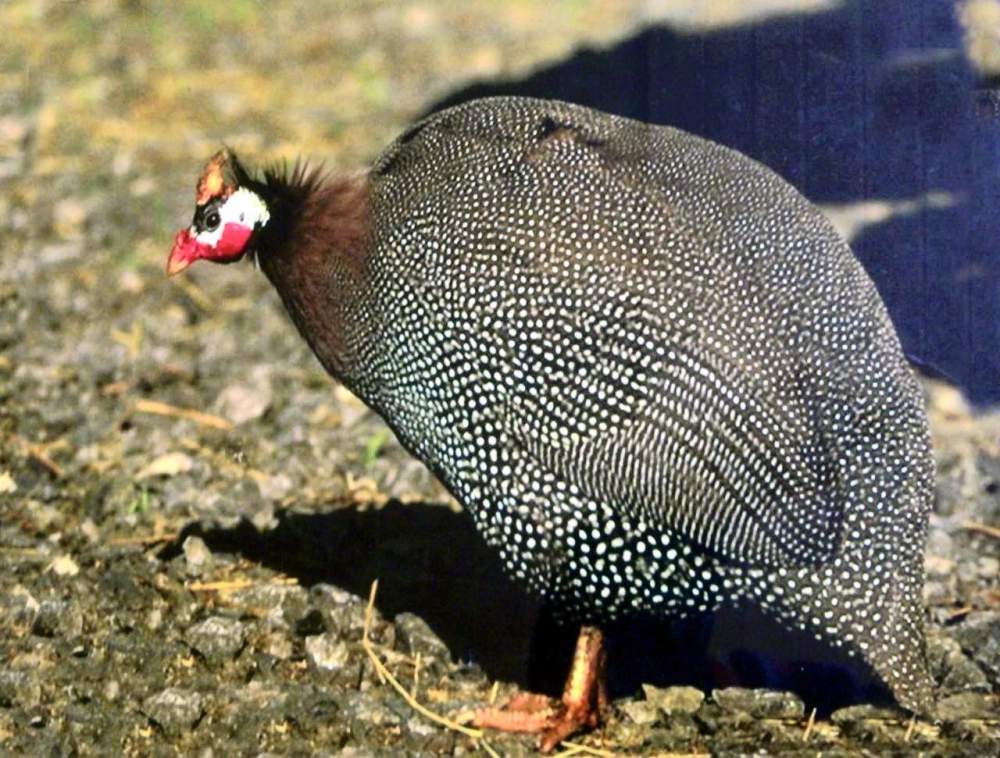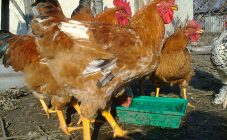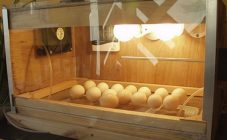Content:
Domesticated guinea fowls belonging to the order of chickens are considered royal food. They were brought from Africa, while they feel great in the climate of Russia and Ukraine and continue to breed even in the cold season. It is possible to keep birds both in perches and on a walk, however, free-walking animals should clip their wings as they grow up, as they run fast and can fly.
A significant advantage of guinea fowls in comparison with chickens and other agricultural birds is considered to be high resistance to diseases, simple care and inexpensive maintenance.
Guinea fowl eggs are smaller than chicken eggs, however, like meat, they are considered extremely useful. The content of retinol in chicken testicles is up to three times lower than in guinea fowls. They can be stored for much longer than the eggs of other bird species. However, the guinea fowl is a rather capricious bird that easily falls into a state of stress. Because of anxiety, hatching of chicks is difficult. The brood hen can leave the nest, so to breed babies, they are often placed under another farm bird or placed in an incubator.
Incubation benefits
Because domesticated guinea fowls make poor brood hens, chicks are often raised in incubators. This leads to the fact that the number of babies hatched from the hatchery increases significantly. In addition, they can hatch from the egg in one day, which is important for summer feeding. At the same time, additional care will be required for the eggs in the incubator, maintaining the desired temperature and humidity during the various stages of hatching. Breeding chicks with an incubator is more complex.
Training
The incubation conditions for chickens, guinea fowls, pheasants are similar. Birds are unpretentious to conditions and food. They can be kept in the same room and on the same perches. The weight of a mature and healthy individual reaches 2 kilograms.
The number of testicles per year may differ depending on the breed.
To incubate eggs, fertilization will be required, so males need to be kept together with females at the rate of one rooster for three or four hens. Birds begin to mate at the onset of high average daily temperatures, most often from mid-April to early May. They continue to breed for up to six months, and then take a break for the winter. However, with correctly designed artificial lighting in the room where the bird is kept, they can carry up to three seasons, leaving the owners without production only for the winter. Most of the eggs with a healthy rooster and females will be fertilized. In the best case, up to 85% of the eggs are suitable for incubation. After incubation, healthy chicks emerge from three-quarters of the eggs.
Before collecting the eggs, the livestock should begin to feed vigorously so that the birds can gain energy and get viable offspring. They should be fed with cereals mixed with leftover meat and fish, adding fermented milk products.
Before setting, make sure that the cells in the incubator are suitable for the size of the guinea fowl eggs, as they are small. The incubator should have an automatic temperature and humidity control system. For incubation, you will need to monitor the readings of the dry and wet bulb thermometers. If necessary, turn on the evaporator to remove excess moisture. It will be necessary to provide ventilation of the incubator, as embryos will require a lot of oxygen to develop.
Breeding guinea fowls in an incubator
To hatch chicks in an incubator, eggs from healthy females are required, checked with an ovoscope in the light in dark rooms for the presence of an embryo. Before laying the eggs, it is recommended to check them by lightly tapping each other. If a slight crackling is heard, microcracks are present in the eggshell. They should not be placed in an incubator. It is also advisable to place clean samples in the incubator.
When breeding guinea fowls, you will need to turn the eggs at least twice a day. How many days do guinea fowls hatch in an incubator? From 26 to 29 days, longer than chickens, so the incubation regime for other chickens will not work for them.
The incubation period of guinea fowls will require close monitoring of the laid eggs. In the process of development, it will be necessary to study them from time to time for a blood ring or frozen embryos.
Eggs should be examined before incubation begins. Further examination is carried out at the end of the second week of incubation, it is necessary to get rid of eggs with blood rings. And just before hatching, on day 23-25, eggs with a dead embryo are thrown out of the incubator.
Guinea fowl incubation mode
To successfully complete the incubation of guinea fowls, certain conditions of humidity, temperature and access to air are required. Compared with chicken fruits, guinea fowl eggs are smaller, they will hatch at a later date, their air capsule inside is smaller.
Incubation of guinea fowl eggs, incubation mode: table
| Period | Temperature ° С | Humidity | Airing |
|---|---|---|---|
| 1-2 days | 37,8-38 | 65 | Leave without ventilation |
| From 3 days to two weeks | 37.6 | 60 | 5 minutes |
| 15 to 24 days | 37.5 | 50-55 | 7-10 minutes |
| 25 days | 37.6 | 50 | 10 minutes |
| From 26 to the exit of the egg membranes | 37.2 | 68 | Leave without ventilation |
How to breed guinea fowl in a home incubator
As you can see from the table, temperature and humidity should be gradually reduced in the incubator over time. At the same time, in the last stages, on the contrary, it is worth increasing the humidity.
To successfully incubate chicks in an incubator, you will need to follow the scheme presented in the table. To be placed in an incubator, they must have the following features:
- Guinea fowls begin to lay at the age of six months. At the same time, the highest percentage of success is achieved when laying eggs from guinea fowls in the incubator at the age of 8 months to a year. Moreover, the number of chicks reaches 70-75%.
- You will need to monitor the mass of eggs. It is advisable to select only those with a mass of 39 to 50 grams. It is possible to store them for up to a week at a low temperature, up to 12 degrees, and very high humidity. It is recommended to keep it only in an upright position. Eggs stored for a longer period lose much in hatchability.
- Eggs that are too small, weighing less than 38 g or with an atypical shape, are not recommended to be placed in an incubator. It is also better not to lay two-yolk ones or those that have problems with the oxygen chamber. If there are problems with the shell, it is also worth discarding.
Dirty eggs are thoroughly washed with manganese solution and dried. Before laying, you should group the eggs by size and place them in different trays.
For incubation of chicks, it is better to choose incubators with an automated monitoring system for temperature and humidity, the presence of built-in dry and wet thermometers. It is also desirable that it has an automatic egg-turning function.
